CLICK HERE TO SEE PAPER PRESENTED AT SARA CONFERENCE IN GREEN BANK JULY 25, 2017
I have decided to give up the quest for the holy grail of imaging visual objects.
It’s a long story, but basically I saw a setup that gave coffee table images within minutes of arriving at a semi dark site. It’s just a commodity now, just buy the pieces and you are an imager.
So, I decided to go into radio astronomy. I’ve been intrigued by it for years, and my background is in radio communications. My last job was working with electronics in the 4 giga hertz range, so it’s a familiar topic.
I recently came across a thread on Cloudy Nights about a receiver called an RTL-SDR.
Not sure what the RTL stands for, but SDR is for Software Defined Radio.
Basically it’s a $25 device that plugs into the USB port on your PC.
Then, running SPR# software, you program it to receive the frequencies you want.
The radio can be tuned to received any frequency from 24Mhz to 1.7Ghz and multiple modes of modulation.
I’m interested in the Hydrogen line which is at 1.42 Ghz so this fits right into my plans.
So, you need:
Receiver
Antenna
Amplifier chain.
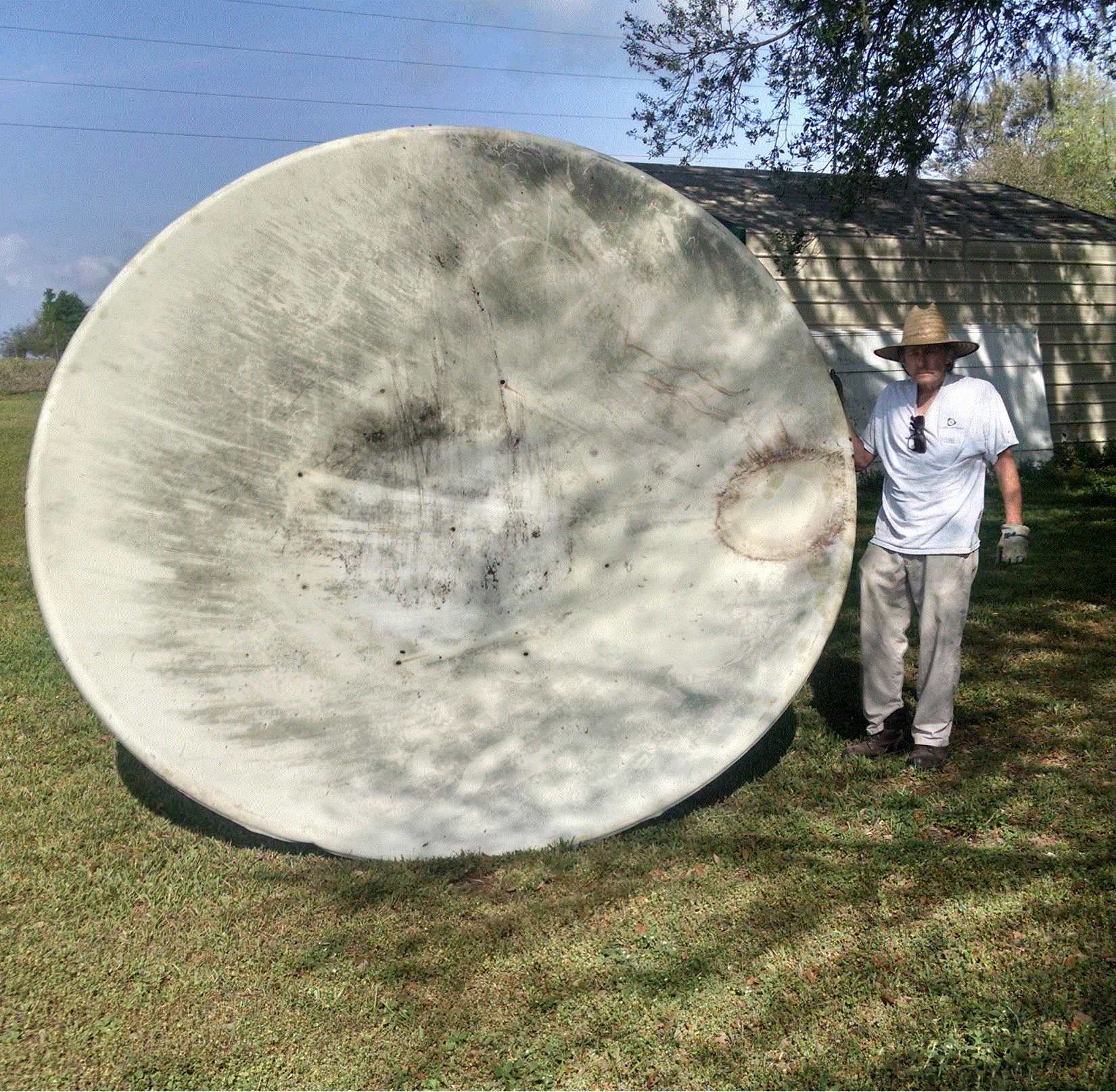
This is my amplifier chain and filter.
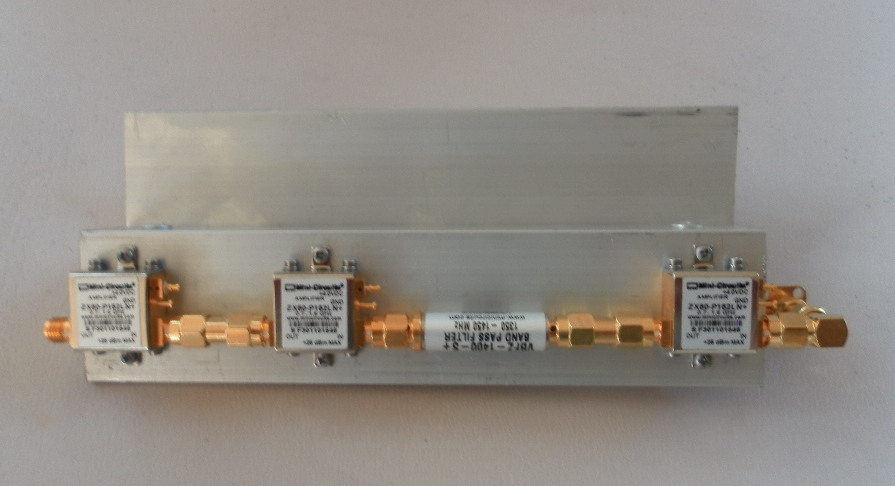
March 31, 2016

Put all the parts together today and applied power.
No smoke, so, success.
Saw noise level increase when power applied to amplifiers but no signal at 1.42 gHz when pointed at the sun. Not suprised.
Today I built a small horn and mounted it to an old tripod that someone had given me.
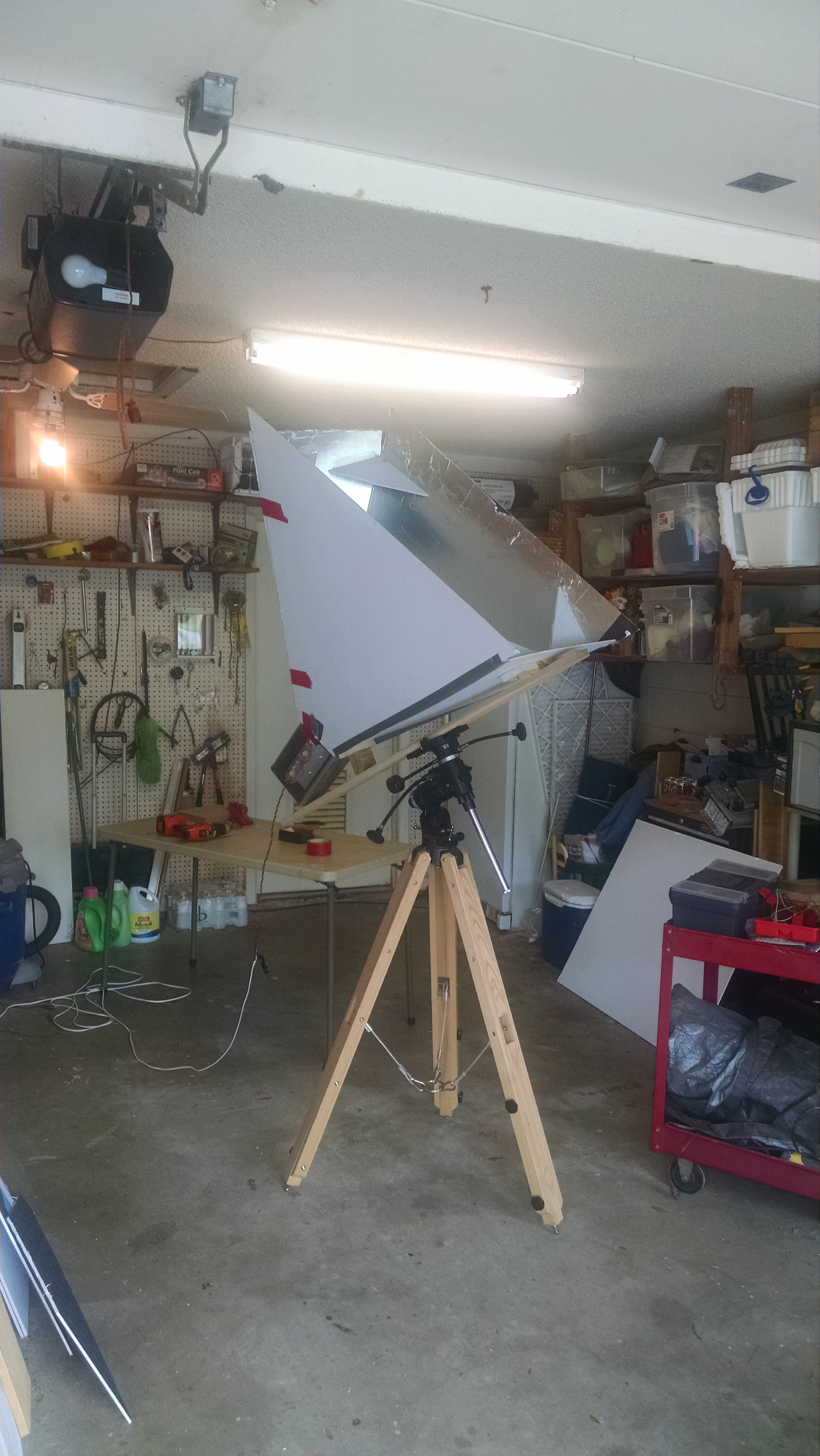
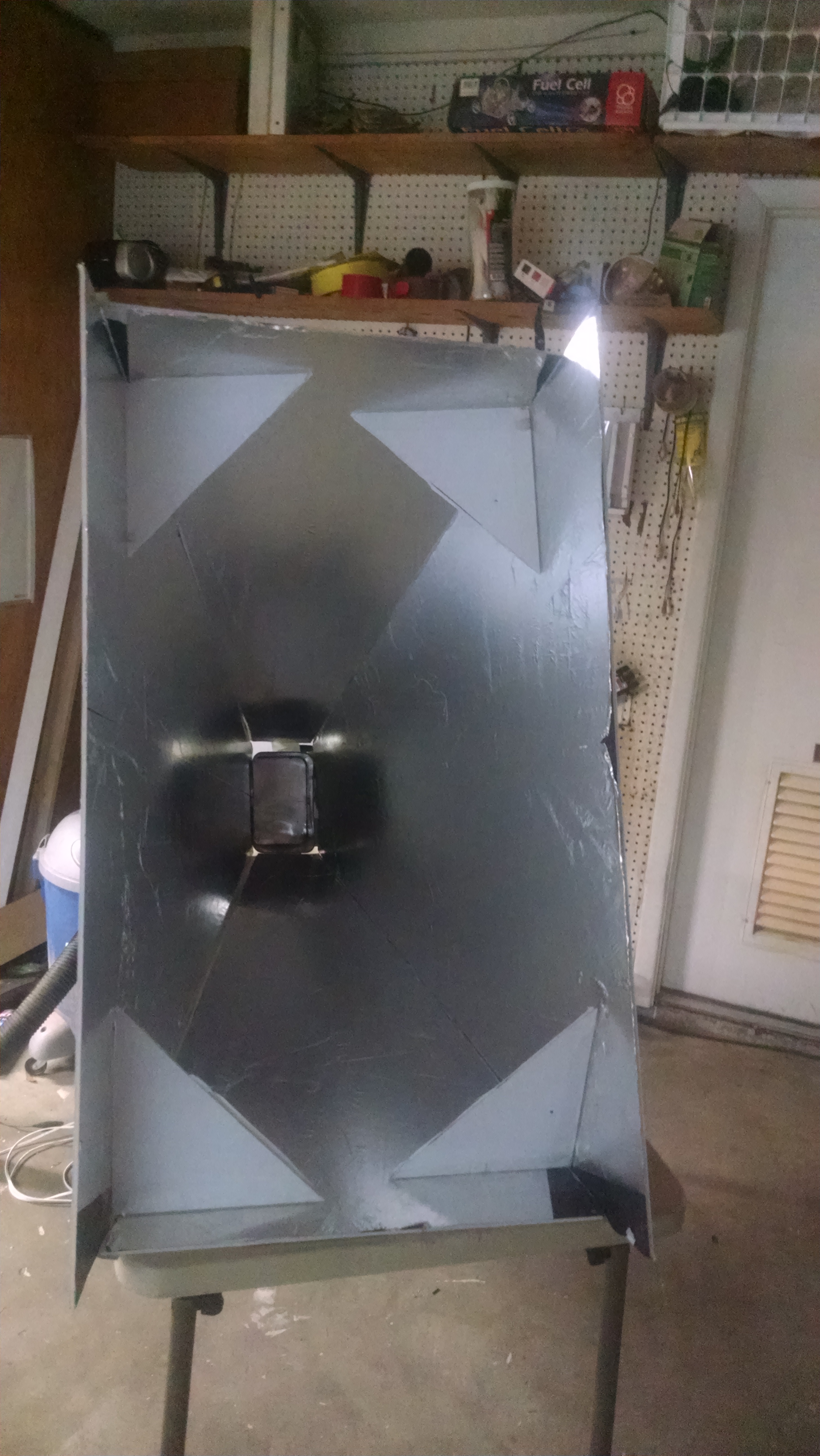
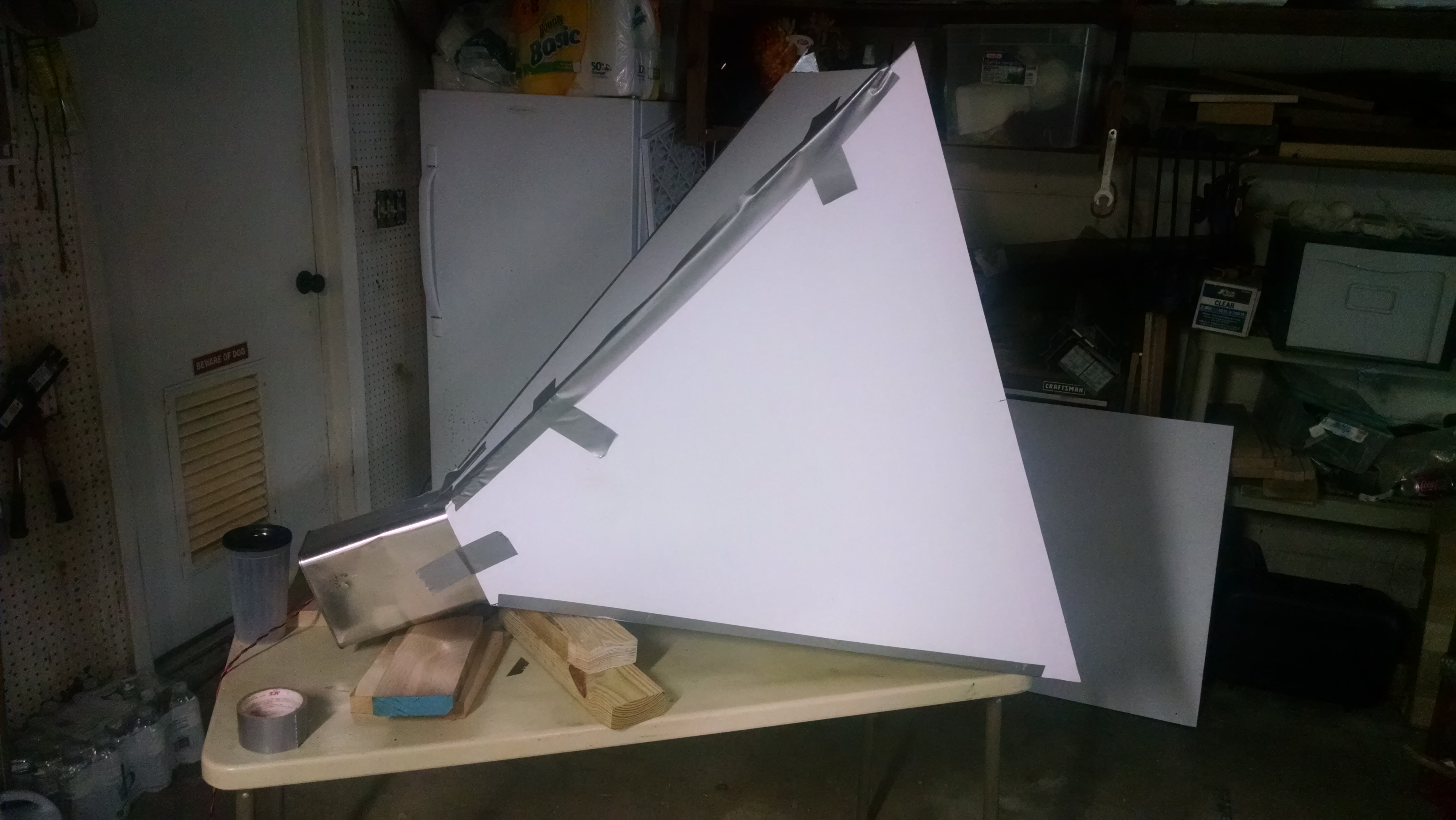
At least it’s something to experiment with.
Got two 4×6 posts bolted to the support post today. They are 8 feet long with 4 feet going underground. Now I have to find a way to get a yard of concrete delivered to the site.

Also, I washed the dish.
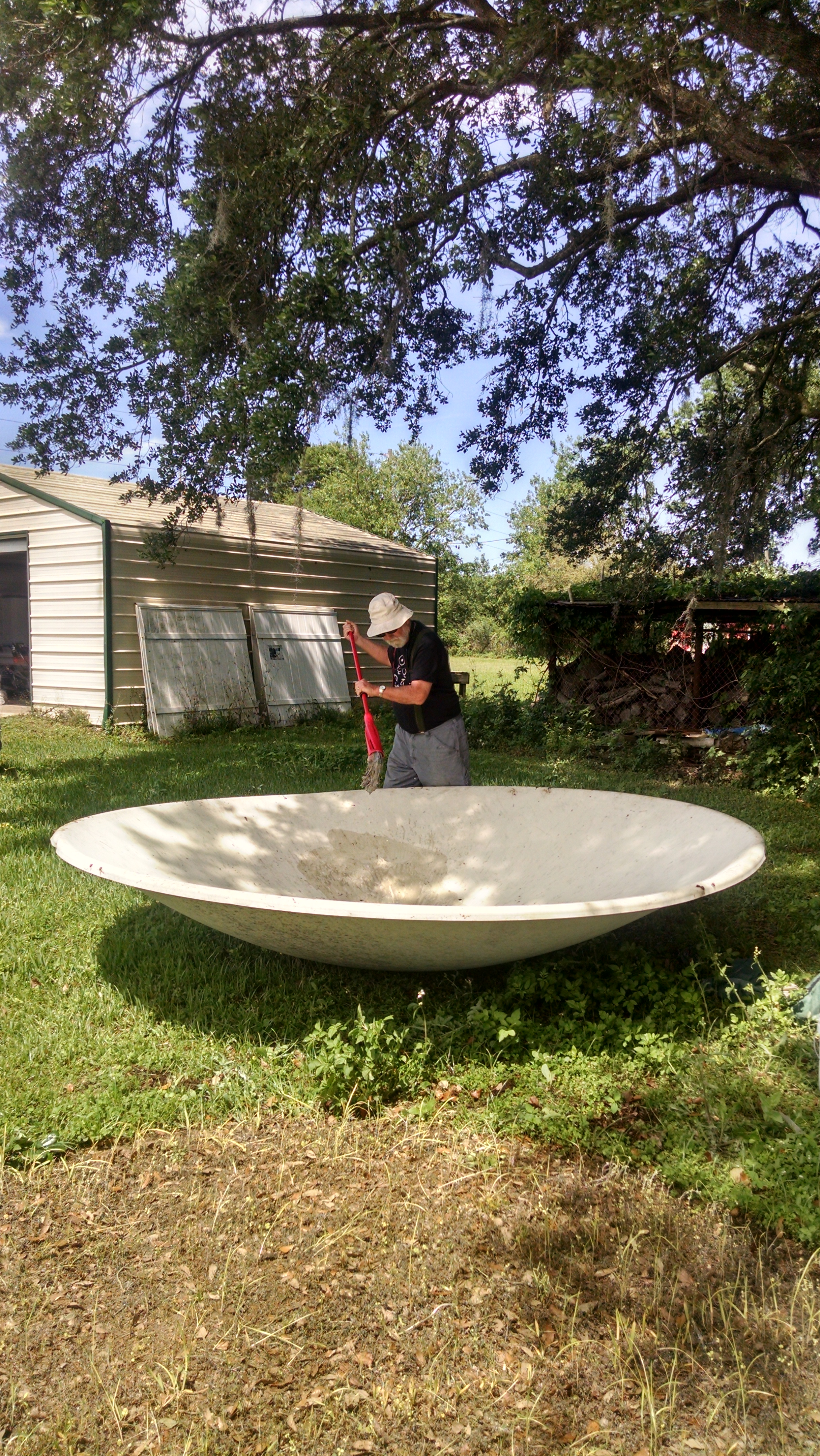
Ran the first tests on the RTL-SDR receiver.

I purchased a TPI synthesizer and connected it directly to the input of the dongle.
The TPI has variable output, but only goes down to -55dBm.
The signal still maxed out the input of the receiver.
I had my amplifier chain tested by a professional labratory.
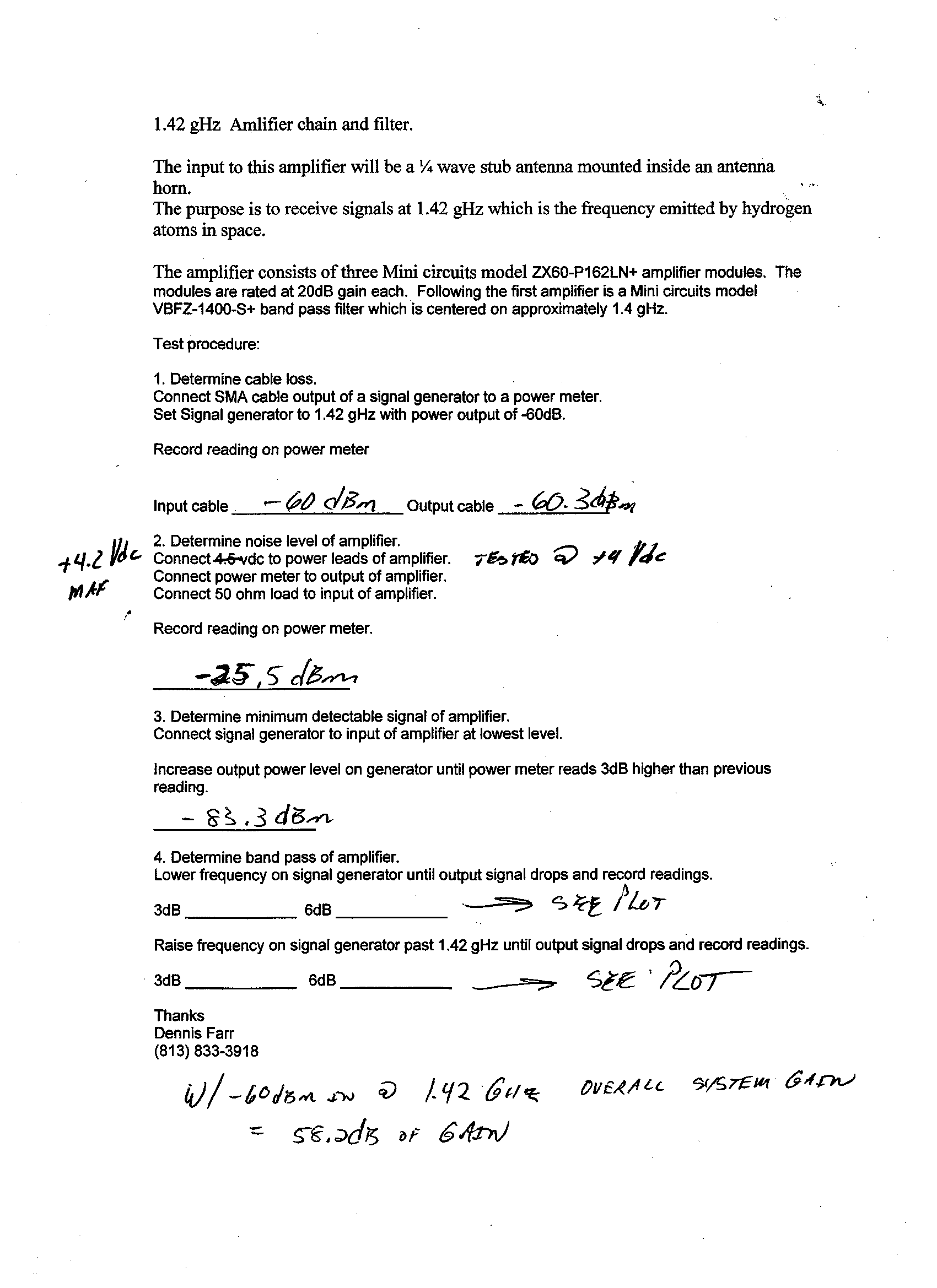
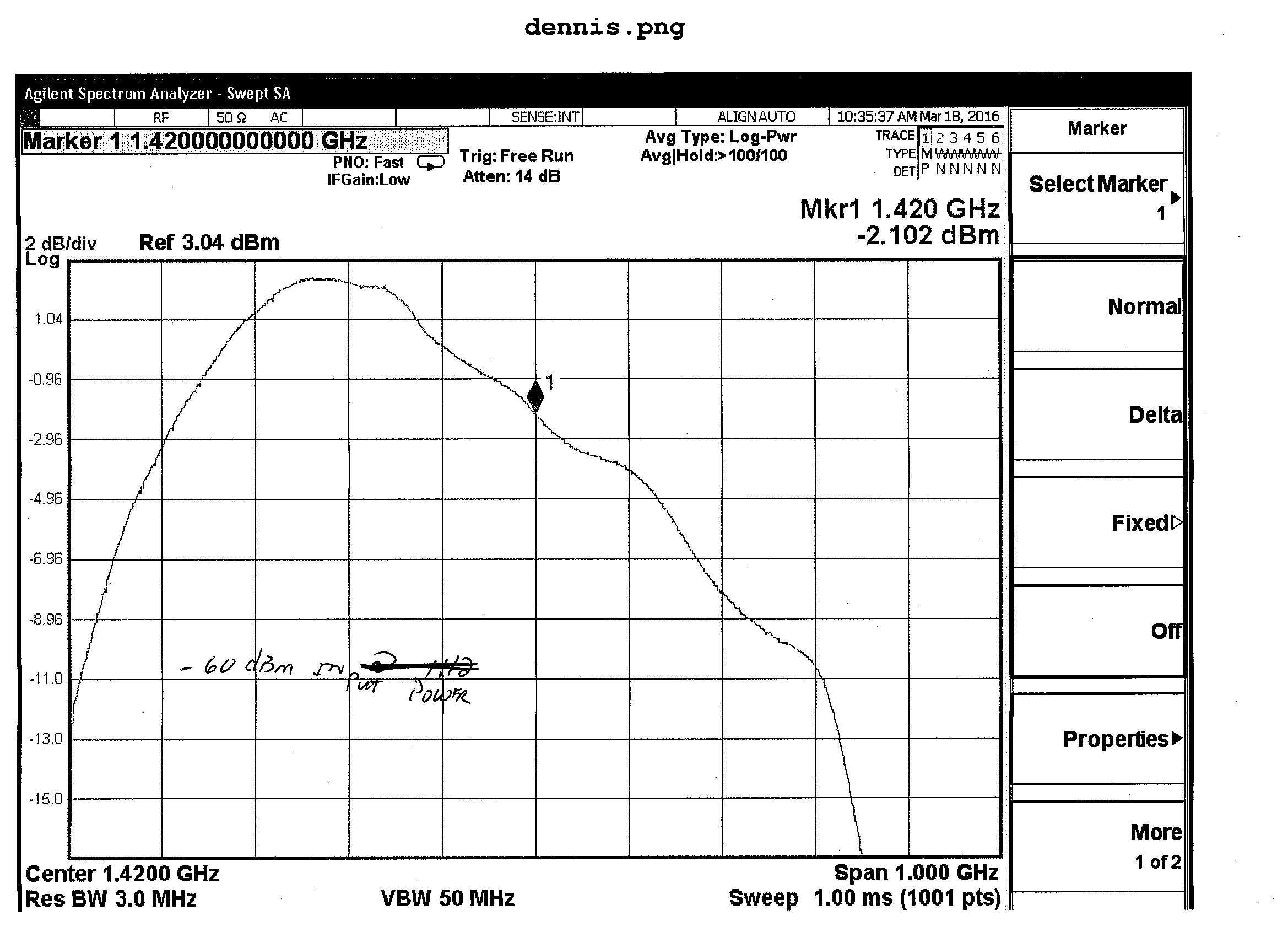
Here are the results.
Today the dish went up! Yea.
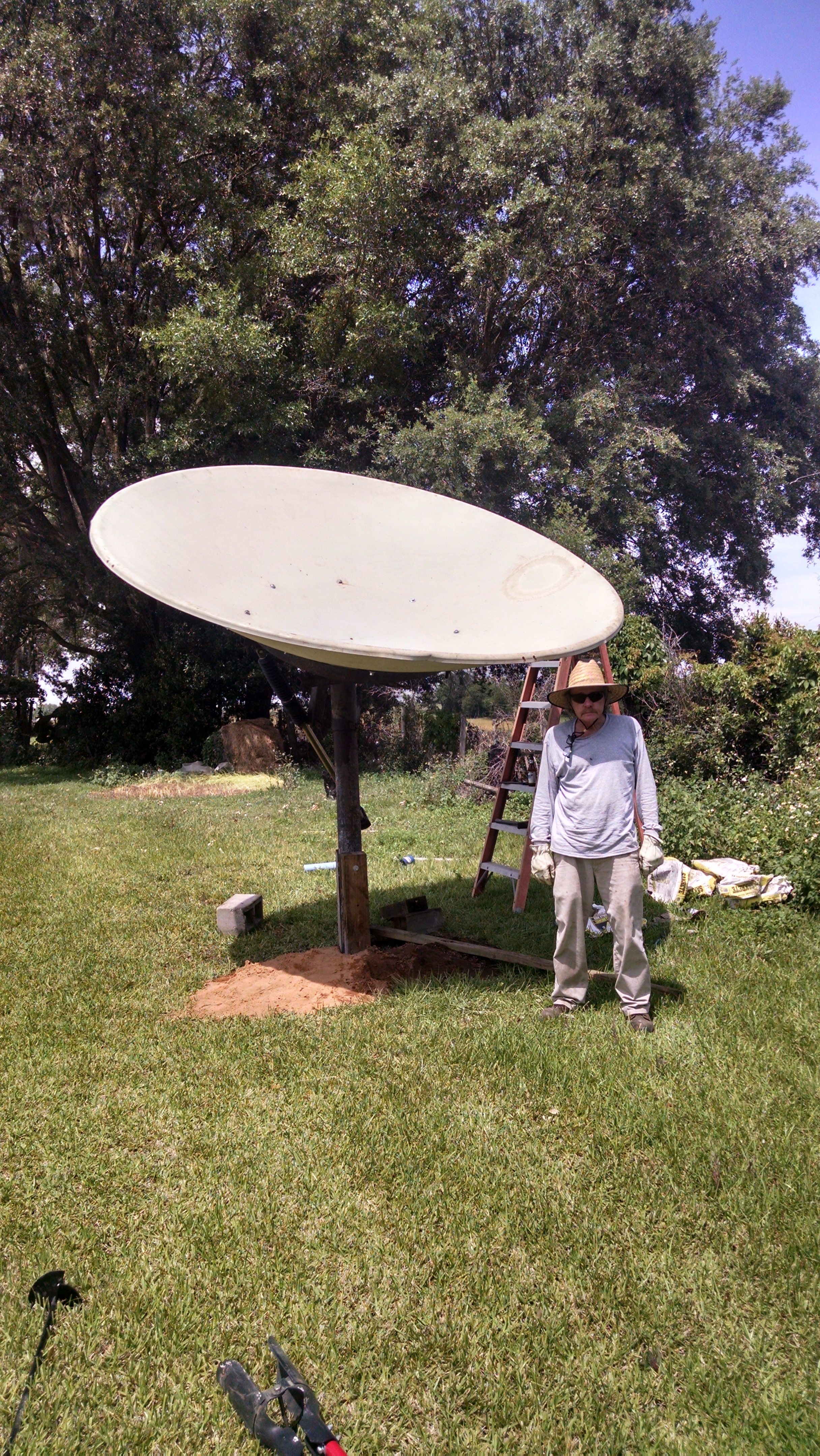
A long process and very labor intensive but goals were set and goals were met.
Built the ‘spyder’ this weekend. Feed horn support assembly ready to mount on dish.

Hopefully next Thursday.
First use of system.
Poor mans altitude indicator
I received a signal, I think.
Youtube video link:
Youtube video of first signal.